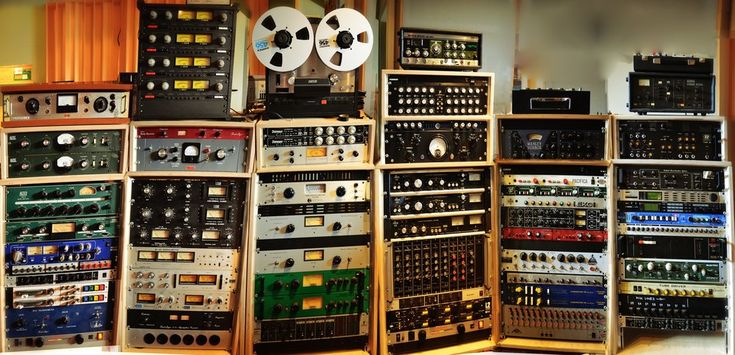In this serie:
Virtual Studio Technology (VST) plugins are what amateur and professional recording engineers and artists use to enhance their audio projects. A plugin is a type of software that works inside another piece of software. Instead of working on its own, you plug it into something else (in our case, the DAW).
If you’ve ever visited a recording studio, you’ve certainly noticed some racks containing objects called effects: they’re the equipment that allows the sound engineer to add details to the instruments, maybe some reverb, an echo, a compressor or a special effect. For a guitarist these are the studio equivalent of the numerous pedals at his feet, and the studio ones are much more refined, precise and expensive.
The chain of effects can actually characterize the sound of an instrument in an important way, the famous case being the sound of the solos of Pink Floyd guitarist David Gilmour. Two notes are enough and you recognize it. Or Jimi Hendrix’s Wha Wha, and many other famous examples (and we are talking about just ONE effect).
One of the most famous effects used by Gilmour is a delay called the Binson Echorec, a tape echo from days gone by.

That distinctive sound is so desired that many software houses has seen fit to create a replica of the delay in digital format, emulating not only the sound but also the look in the interface.
A quick internet search for Binson Echorec VST will yield many results.
This delay is just an example, you can find any kind of known and unknown effects, free and paid, in every category and often it will be just how you use effects that will shape your personal sound.
Your DAW’s mixer will allow you to use them freely, even emulating rather refined techniques such as sidechain and parallel compression.
The world of effects is a complex world, just as important as that of tools. Below is a probably partial list of the available audio effects organized by categories.
Dynamic Effects
Compression
FET Compression
Multi-band Compression
Optical Compression
Parallel/Manhattan Compression
Sidechain Compression
Variable Mu Compression
VCA Compression
De-Esser
Distortion
Bitcrushing
Clipping
Distortion
Fuzz
Overdrive
Sample Rate Reduction
Tape Saturation
Valve Saturation
Exciter
Expander
Level
Limiting
Noise Gating
Noise Reduction
Transient Shaper
Modulation Effects
Chorus Flanger Phaser Ring Modulation Rotary Effect Tremolo Vibrato
Sound Manipulation Processes
Reverse Time Compression Time Expansion
Spectral Processes
Equalization
Dynamic EQ
Graphic EQ
Parametric EQ
Semi-Parametric EQ
Shelving EQ
Filters
Band-pass Filter
Bell Curve Filter
Envelope Filter
High-pass Filter
High Shelf Filter
Low-pass Filter
Low Shelf Filter
Notch Filter
Wah
Imaging
Panning
Pitch Correction
Pitch Shifting
Time-Based Effects
Delay
Analog (BBD) Delay
Digital Delay
Doubling Echo
Haas Effect
Ping Pong Delay
Reverse Delay
Shimmer Delay
Slapback Delay
Tape Delay
Looping
Reverb
Acoustic Emulation Reverb
Bloom Reverb
Convolution Reverb
Gated Reverb
Plate Reverb
Reverse Reverb
Shimmer Reverb
Spring Reverb
Some Free VST effects plugins (list is very bog, just do a search for free VST effect on web):
- Autotune
- Compressors
- Mastering Compressors
- Delay
- EQs
- Guitar Amps
- Metering
- Reverb
- Saturation
- Transient Shaper
Have fun, don’t listen to the various gurus, find your own way creating your personal, distinctive sound.
